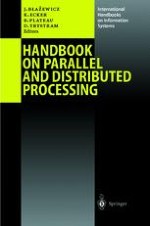In this volume authors of academia and practice provide practitioners, scientists and graduate students with a good overview of basic methods and paradigms, as well as important issues and trends across the broad spectrum of parallel and distributed processing. In particular, the book covers fundamental topics such as efficient parallel algorithms, languages for parallel processing, parallel operating systems, architecture of parallel and distributed systems, management of resources, tools for parallel computing, parallel database systems and multimedia object servers, and networking aspects of distributed and parallel computing. Three chapters are dedicated to applications: parallel and distributed scientific computing, high-performance computing in molecular sciences, and multimedia applications for parallel and distributed systems. Summing up, the Handbook is indispensable for academics and professionals who are interested in learning the leading expert`s view of the topic.
